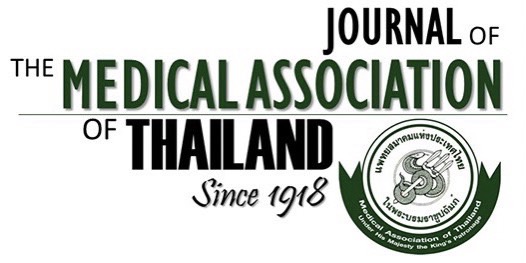The Rotational Axis of The Tibia and Relationship to The Tibial Torsion in Varus Osteoarthritic Knee
Thanainit Chotanaphuti MD*, Ruthasiri Srisawasdi MD*, Piti Rattanaprichavej MD*, Artit Laoruengthana MD**
Affiliation : * Department of Orthopaedics, Phramongkutklao Hospital, Bangkok, Thailand ** Department of orthopaedics, Faculty of Medicine, Naresuan University, Phitsanulok, Thailand
Background : A transepicondylar axis is a useful reference for femoral component rotation and is demonstrated as a
functional flexion-extension axis of a knee. Conversely, a rotational orientation of the tibial component was less clearly
demonstrated and many anatomical landmarks were proposed. It has been reported that Asian people had more medial
torsion of the tibia particularly with an osteoarthritic knee. The present study aims to address the relationship between the
torsion variation of the tibia and the rotational axis of the tibia.
Material and Method: Forty knees of 32 women (mean age of 73.3) with varus osteoarthritis underwent a preoperative CT
images to identify a surgical epicondylar axis, an axis perpendicular to this line (femoral reference line), lines connecting
between the PCL insertion and 3 reference point on the patellar tendon, an AP axis of the ankle and a tibial torsion angle.
Results : The mean value of the angle between the line connecting the PCL insertion and 3 different point of the patellar tendon
including the medial border, medial one-third and middle of the patellar tendon and the femoral reference line was -4.22,
+4.37 and +8.47 degree, respectively. The mean of a tibial torsion angle was +16.51 degree. There were 6 cases having the
femoral reference line rotated internally to the medial border of the patellar tendon and having less torsion angle (medial tibial
torsion) with a mean of +13.78 degree.
Conclusion : The femoral reference line in the Thai osteoarthritic knee is passed between medial edge of patellar tendon and
medial 1/3 of patellar tendon. This line rotates more internally compared with the patellar tendon if the degree of medial tibial
torsion is more severe. An excessive externally rotated tibial component when using the patellar tendon as guidance should
be avoided in the knee presenting with medial tibial torsion.
Keywords : Rotational axis of tibial component, Tibial torsion, Transepicondylar axis, Total knee arthroplasty



